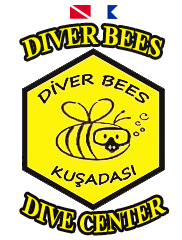The divers who have completed the Beginner level course obtain the beginner level skills. They are allowed to dive until 18 m/60 ft. However many wonderful coral reefs, wrecks and caverns and world-famous walls and other dive sites are below this depth. If you don’t want to miss these sites, we recommend you to attend our PADI Advanced Open Water Diver course and receive your Advanced level certification.
This course will teach you many valuable skills and extend your knowledge as a diver. Here are some of the trainings you will attend during this course:
Deep dive: As we have mentioned in the introduction, this course will teach you how to dive safely below 18 m/60 ft. You will experience deep diving until 30 m/90 ft. with your instructor. Some other training systems allow student divers to dive until 40-42 m/120-126 ft. in the second level course, however, we believe that the first deep dives should not exceed 30 meters and this is also the rule of PADI’s Advanced program. As the diver gains confidence and experience, the depths can be extended to 40 meters. In the deep diving training, you will get first-hand experience about the pressure-volume relationship, gas narcosis, color loss and change in ambient light. You will also learn which precautions should be taken on the boat and underwater before and during a deep dive. This course will increase your confidence for deep diving.
Underwater Navigation: You will learn and practice compass navigation and natural navigation and apply the techniques you learn to navigate challenging patterns like squares and triangles underwater. These skills are invaluable for all divers, especially for advanced divers.
Drift dive: Currents are natural water movements that you will experience at one point in your diving career. Advanced divers don’t fight the current, on the contrary, they “use” the current to their advantage and adapt their diving techniques accordingly. Drift dive trainings will teach you these techniques and you can apply what you learn in this course to dive with current and swim longer distances underwater with less effort. Without this training, currents can be an extra burden, so this training is very useful.
Peak Performance Buoyancy: If you ask an experienced diving instructor: “who is the best diver?”, her answer would most probably be “the diver with perfect buoyancy”… Underwater is very similar to space in terms of gravity, and you may have heard that the astronauts take their initial training underwater. If this is such an important topic, wouldn’t it be nice for an advanced diver to stay leveled underwater without any effort, position his body to minimize the drag and have good buoyancy which will prevent him to harm aquatic life? We believe it would and that’s why we recommend this training to all our advanced students. In this training, you will learn the ideal way to swim underwater, effective fin kicking techniques, and hovering skills with using your breaths. These techniques and skills will help you to consume less air, make more relaxed and safe dives and protect yourself and aquatic life by staying away from the reefs and bottom.
Boat dive: An advanced diver should have the basic understanding of the logistics and operation of the boat s/he dives. Every type of dive boat has its own properties and rules and these are mostly globally accepted. Therefore, if you want to extend your experience as a diver, it will be very useful to learn communication and sailing equipment, emergency procedures, first aid kits, and departure procedures of dive boats. Dive boats can vary from small inflatable boats to charter boats or even liveaboard boats with multiple cabins. In this course, you will also learn about the basic characteristics and standards of different types of dive boats.

